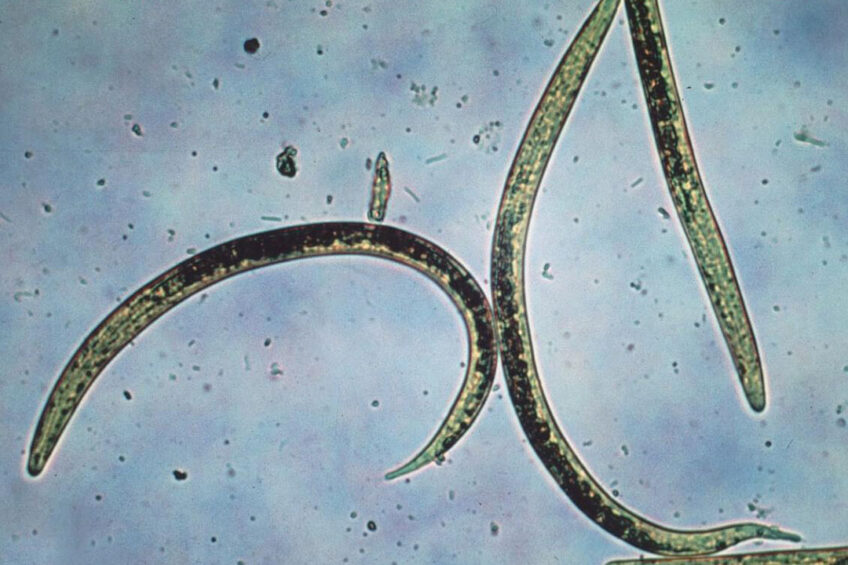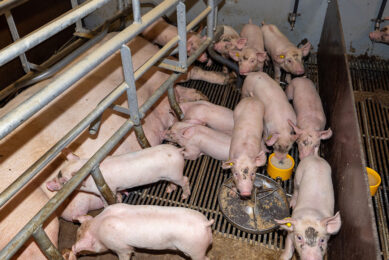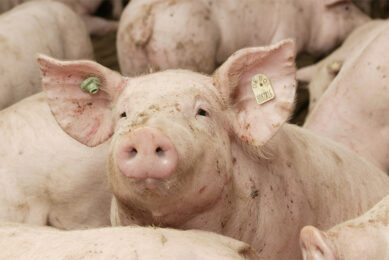Parasites: A real burden to the livestock sector

Parasitic infections both internal and external, can interfere and affect the gut, the lungs and in some cases, even cause death. Farmers whose livestock is affected can lose millions of euros. Good hygiene practices and preventative strategies can be used to manage diseases.
Part of the Gut Health 2022 Special
Good animal welfare practices are essential on farms these days not just to tick-box consumer concerns but more importantly to ensure livestock are as healthy as possible.
Farmers know that healthy livestock perform better in terms of growth and milk yields, but sometimes the internal damage done by parasites is often only noticeable when it’s too late.
A parasite is an organism that lives on or in a host organism and gets its food from or at the expense of its host. Parasites cause a reduction in feed intake and utilisation of nutrients. This leaves animals that are infected with parasites showing signs of diarrhoea, respiratory disease, and even death.
The most common important internal parasites of cattle are roundworms, lung worms, liver flukes and coccidia. Externally, the common parasites include lice and grubs.
Vets and farmers both know that the presence of lung worm, roundworms and liver fluke are the leading cause of production losses for the cattle industry, costing farmers millions of euros.
Parasite types
Many types of roundworms can be found in all parts of the gut and lungs. They are small, often white in colour, and look like threads. Tapeworms are long and flat and look like white ribbons. They consist of many segments and live in the intestine. Flukes are flat and leaf-like, and they live in the liver.
Roundworms and flukes lay eggs which pass out of the animal in the dung onto the pasture. Tapeworms produce eggs in the segments which break off and pass out in the dung. Animals become infected when they graze the pasture.
Lungworm infections in cattle occur when they ingest Dictyocaulus viviparus larvae from pasture. Larvae pass through the animal’s gut and travel to the lungs, where they mature into adults; a process that takes around 3 weeks. Once mature females start laying eggs, these eggs hatch producing young larvae that travel up the windpipe, are swallowed and pass through the gastrointestinal tract and are passed out in the faeces, infecting the pasture and increasing the parasite burden on the pasture.
This cycle takes around 4 weeks to complete; 1 week for the larvae to mature on pasture and 3 weeks for larvae to mature into adults in the animal.

Devil’s advocate
Peter Zieger, a vet working with Diamond V, outlined how worms play a ‘devil’s advocate’ when grazing cattle.
Peter says: “Grazing offers various benefits for ruminants, but worms can really play a devil’s advocate here.
“We know 3 different kinds of worms, tapeworms, roundworms and flukes exist, but an overall fitting strategy is not available, so we should look differently at them.
“Tapeworms are a huge concern in small ruminants with increasing resistance problems. So, avoiding a common grazing ground with these animals might be the first step for a risk reduction of infection.
“Roundworms are the most common type in ruminants, with the lungworms being the most dangerous, able to cause fatal cases, but overall acting as reducing the feed efficiency and resulting in less lean tissue growth or reduced milk yield.
“Flukes are often to be found in wet areas where some snails are mediators of infection. Open, natural water spaces carry the highest risk of infection.”
When it comes to treating worms, Peter says a targeted approach is essential to be successful.
“For best treatment options it is crucial to identify the right worm specimen, so that a targeted medication can be chosen. Altering in anti-parasiticides is also very important to reduce risk of resistances,” Peter adds.
Exposure to lungworm
Cattle can develop natural immunity to lungworm, usually taking one to 2 months to develop, but continued exposure is needed to maintain immunity.
Dairy calves and autumn born suckler calves are very susceptible to infection, therefore vaccination is recommended prior to turn out to develop immunity.
Clinical signs of lungworm infection include respiratory signs, panting and harsh persistent cough. Severe infections may result in difficulty breathing and death.
Lungworm infection should be considered when calves are showing signs of respiratory disease whilst at pasture. Diagnosis is through faecal testing; however negative results are possible in acute infections. Lungworm can be treated with most wormers used for gut worms in cattle.
Anthelmintic and vaccination options are available for the treatment or control of lungworm disease, however veterinary advice should be sought prior to treatment as symptoms may be made worse in severely affected animals by dead or dying larvae which can block the lower airways.
Signs of coccidiosis
Farmers have been advised to look out for coccidiosis in spring born calves and lambs, which are at risk once passive immunity gained from colostrum starts to wear off.
MSD Animal Health veterinary adviser Dr Kat Baxter-Smith says, “Thanks to antibodies gained through ingesting colostrum early in life, calves and lambs initially acquire some passive immunity to the parasite. But this protection is short-lived, leaving young animals particularly susceptible to infection as they grow and develop as the weather warms up.”
Clinical coccidiosis is caused by a build-up in the rearing environment of oocysts produced by the Eimeria parasite.
Dr Baxter-Smith adds, “susceptible growing calves and lambs become infected by ingesting these oocytes when they lick contaminated objects in their rearing environment or ingest feed or water contaminated by faeces. Once taken into the body in sufficient numbers, the oocysts hatch, and the parasites invade and destroy intestinal cells. Infection often leads to diarrhoea, weight loss and poor growth rates.”
To manage the disease farmers should adopt good hygiene practices. Also, anticoccidial treatments often have to be used strategically to manage the disease threat on many cattle and sheep units as a consequence.
“This allows youngstock some level of exposure to the parasite so that they gain longer-term immunity, but also removes it before it is able to impact on productivity and further contaminate the environment,” concludes Dr Baxter-Smith.
Farmers should note that coccidiosis is only one of a number of causes of diarrhoea in calves and lambs.
 Beheer
Beheer





 WP Admin
WP Admin  Bewerk bericht
Bewerk bericht